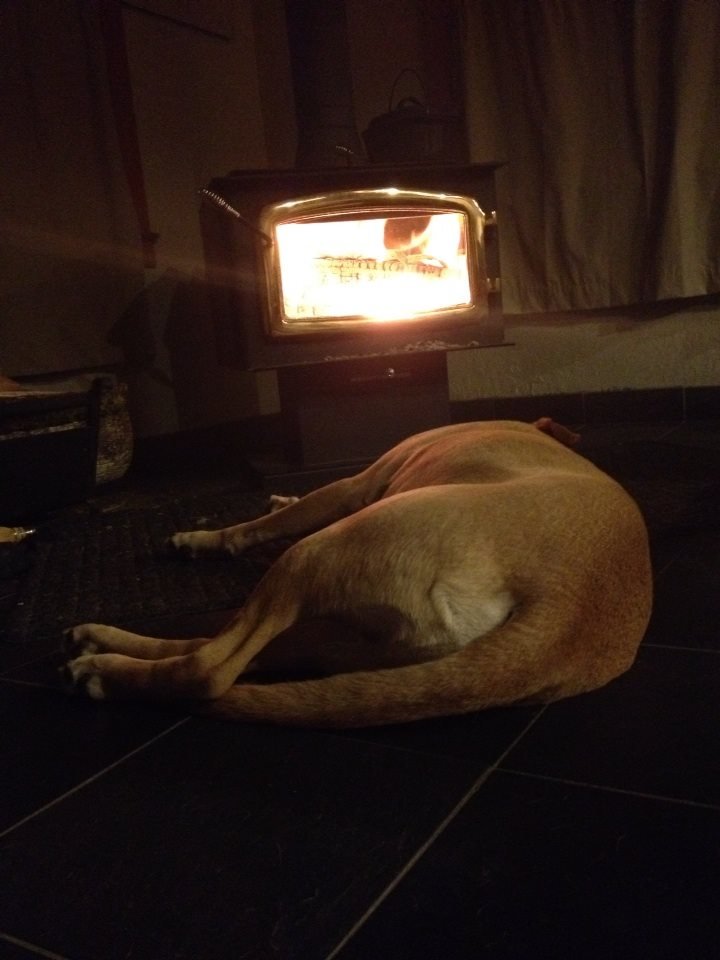If you live in the norther hemisphere this is the time of year that you will be burning last years hard work. It is also the time that you should start working on next years firewood supply. During fall, the trees prepared for the cold winter to come by absorbing the energy that was stored in their leaves and needles, back into the heart of the wood. This causes a higher BTU content in the wood due to the increased level of sap. It is therefor best to fell the trees after they have dropped all of their foliage, and before the new spring growth starts - if you are harvesting deciduous trees it is also less messy to harvest in winter.
Once I fell the trees I plan on burning next winter, I cut them into logs that are equally divisible by the length of the rounds I want. A standard measurement for a round is 16" but I personally cut at 15" - therefor the logs you see above are 10' (120"/15" = 8 rounders per log). If you prefer the standard 16" round then log lengths could be 8' or 12'. These logs are then decked on 4x4s to keep them off of the ground. I can then round them when I have time throughout the season. A TIP that I learned the hot way - deck your logs in a place that will be shaded during the summer. Most of the time I am rounding and or splitting my logs in June when the days can be quite warm.
This is the technique I have discovered that I prefer when stacking my rounds to keep them off the ground before I split them. Try to place the larger diameter rounds on the bottom, decreasing the size as you build up. I can get about a full cord per pallet (these are 4'x6' pallets). This style of stacking also allows me to stack high without the need of building corners or pounding T-posts into the ground to keep the rounds from rolling off.
Do not split in the sun if you have the option... HOT!!!
Plan ahead so that you will be splitting in the shade. You will be thankful that you did.
Or better yet, borrow a hydraulic splitter from a friend. This one is a DIY home-build unit that attaches into the hydraulic system of my tractor. It was the first season I used it and I am now too spoiled to go back to hand splitting the whole winter supply.
I highly recommend stacking your hard earned wood on pallets to keep them off of the ground. I also drive 8' T-posts every 3 pallets. This replaces the need of "building corners" to keep your rows stable. Another tip that I learned, from my dad, a few seasons ago to improve stability, is to lay small diameter "jumper pieces" between parallel rows and stack wood on top of them to tie the rows together. This is done every 3 feet or so along the row at about 2 and 4 foot heights.

And enjoy the fruits of your labor during these long cold winter nights.
This is not necessarily the most efficient way of harvesting and processing firewood, but it works well for me. It keeps the wood well preserved, gives it proper time to cure and allows me to process it as I can without feeling crunched for time. If you would be interested in any tutorials, possibly video tutorials of how to fell, please up-vote and leave a reply telling me what you would be interested in. Thank you for reading!
